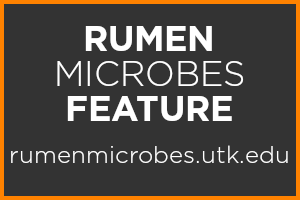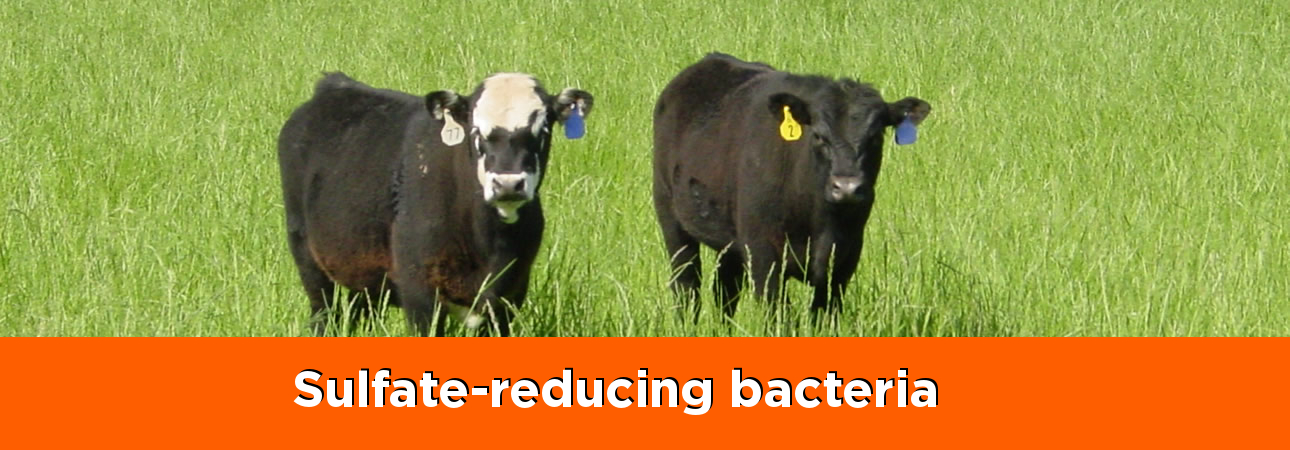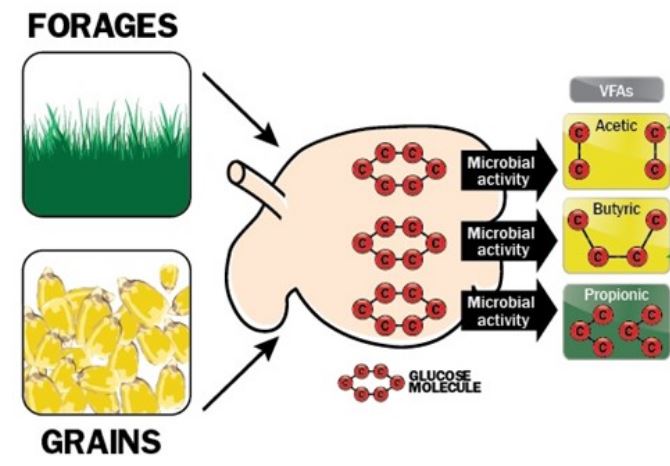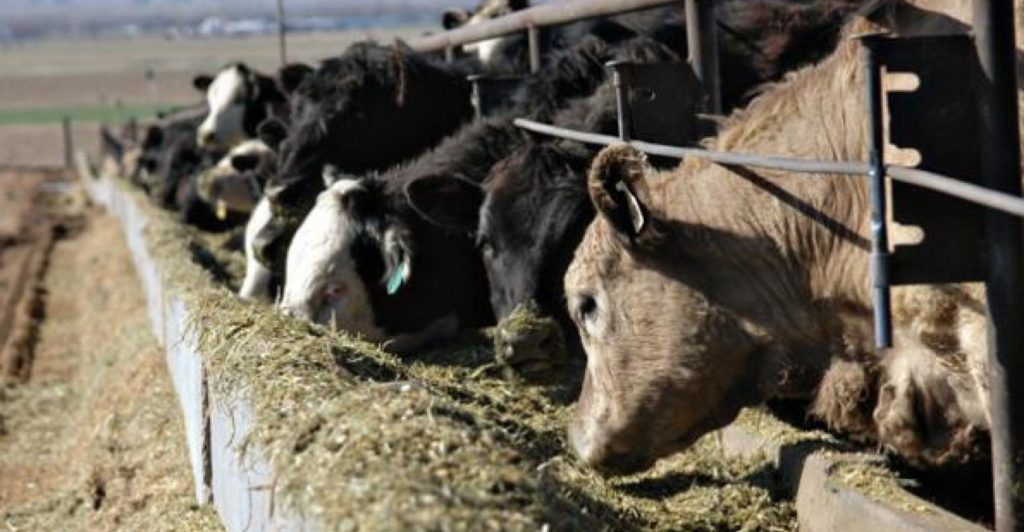
The use of by-products from the ethanol industry for livestock feeding has provided a more readily available feed source. However, the use of these by-products can lead to concerns with increased sulfur concentrations, which can be toxic. Thankfully, sulfate-reducing bacteria like Desulfovibrio desulfuricans are able to reduce sulfur to H2S, which is then eructed out.
Click the image hotspots to learn more about this featured microbe.
This interactive image was created by Emily Melchior

Learn more

Rumen microorganisms break down feedstuffs into energy precursors known as volatile fatty acids. With increased amounts of sulfur from the diet, Desulfovibrio desulfuricans uses these volatile fatty acids, as well as hydrogen, which will react with the sulfur to eventually form H2S. This gas is then eructed out through the lungs. Figure adapted from Nagaraja et al. 1997.
Learn more

Desulfovibrio spp. are gram-negative, rod-shaped organisms that are able to reduce sulfur ingested from high concentrate and ethanol-based byproducts. Figure courtesy of Gilmour et al. 2011.
Learn more

Desulfovibrio spp. may be able to decrease methane production. This microorganism and methane-producing organisms compete for hydrogen. In the presence of sulfur, hydrogen to produce hydrogen sulfide gas is the preferred use of hydrogen produced in the rumen, compared to methane production. Figure courtesy of Amat et al. 2013.
Learn more

Desulfovibrio desulfuricans and other sulfate reducing bacteria make up less than 1% of the bacterial population that breakdown feedstuffs. Image courtesy of Beef Magazine.
Follow this link to view all of the interactive presentations for the Rumen Microbes series.